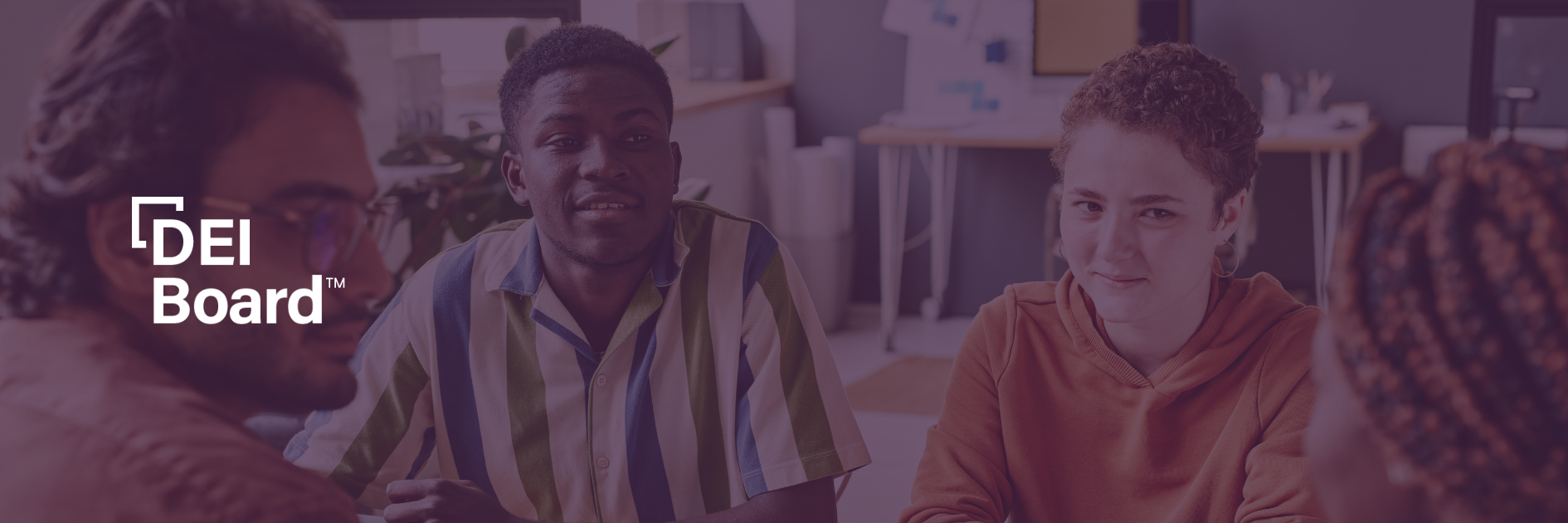Key takeaways:
- Strategic ERG integration: Embed ERGs throughout the employee lifecycle, from recruitment to offboarding, to enhance attraction, retention, and overall employee experience tailored to diverse needs.
- External engagement for impact: Collaborate with external partners to address societal issues and enhance corporate social responsibility, brand reputation, and community impact beyond internal efforts.
- Alignment with business goals: Align ERG agendas with organizational priorities to maximize impact and drive outcomes like supplier diversity and employee well-being.
Employee resource groups (ERGs) have become powerful drivers of diversity, equity, and inclusion (DEI) and employee experience (EX) within companies. They also have the potential to enhance business operations when aligned with broader enterprise goals.
In a recent leadership panel on leveraging ERGs to enhance employee experience and DEI, our Board Members discussed best practices for effectively integrating ERGs into overarching business initiatives.
We highlight the critical steps to leverage ERGs to achieve organizational objectives.
1. Integrate ERG Awareness Across the Employee Lifecycle
Alison Jones, VP of Diversity, Equity, and Inclusion at Edgewell Personal Care, discussed the importance of integrating ERGs.

ERGs help people to see someone like them as soon as they join the business, especially in today’s world where you could be working hybrid or remote.
Alison Jones, VP of Diversity, Equity, and Inclusion at Edgewell Personal Care
She explained that ERGs play a vital role in enhancing attraction, retention, and employee experience from the first interaction with recruitment to the time an associate leaves.
“ERGs help people to see someone like them as soon as they join the business, especially in today’s world where you could be working hybrid or remote,” Alison said.
ERGs can also be utilized at various stages of an employee’s journey beyond community building. For example, Alison noted that ERGs are critical during ongoing employee development.
ERGs facilitate networking opportunities and skill-building workshops tailored to diverse employee needs. Even during transitions or exits, Alison said ERGs can provide support networks and offboarding resources, ensuring employees feel valued throughout their journey within your organization.
2. Enhance Community Impact Through External Employee Resource Groups Engagement
Alison emphasized the importance of ERGs collaborating with external partners to extend their influence beyond internal efforts. She explained that ERGs shape how organizations interact with communities outside their workplace.
For example, at Edgewell Personal Care, they bring attention to external issues such as “period poverty” through their stay-free and carefree feminine products.
In this effort, she explained how their Teammate Resource Groups work alongside community shelters to provide feminine products to those in the community.
“There are many ways that we can advocate and make sure how we show up in the community is not offensive and that employees’ voices are vetted,” Alison added.
Alison said ERGs demonstrate corporate social responsibility by addressing societal issues or collaborating with community organizations. They also enhance brand reputation and community impact.
3. Align Employee Resource Groups Goals with Business Priorities
Shruti Bahadur, Global Leader of Employee Experience and Employee Resource Groups at Dow, talked about the importance of aligning ERG agendas with your organization’s priorities.

That ERG agenda is aligned to the priorities of the company and helps enable ERGs to position themselves as a resource for the employees and as a resource for the business.
Shruti Bahadur, Global Leader of Employee Experience and Employee Resource Groups at Dow
By establishing ERG agendas that mirror company goals, Shruti said organizations can leverage the collective power of ERGs to drive impact on both business outcomes and employee experiences.
“That ERG agenda is aligned to the priorities of the company and helps enable ERGs to position themselves as a resource for the employees and as a resource for the business,” Shruti added.
Use ERG Insights to Support Supplier Diversity Goals
She shared examples of how her team at Dow used the insights from ERGs in various initiatives, such as promoting supplier diversity, addressing employee wellbeing, and advancing corporate strategy.
“Supplier diversity is a priority for the company this year, to the extent that we’ve added supplier diversity goals to our corporate scorecard and corporate level,” Shruti said. “It’s also one of the metrics influencing our yearly bonus payout. That’s the level of importance it has, and that’s where we are activating our ERGs.”
Dow’s ERGs — including Asian, African American, women’s, LGBTQ+, and veterans groups — actively engage with suppliers within their communities to bring them into the Dow network.
They facilitate the certification process, ensuring these suppliers meet Dow’s standards. This proactive approach supports diversity initiatives while positively impacting the bottom line by contributing to a balanced and enriched employee experience.
Activate Your ERGs to Support Employee Well-Being
Shruti also shared how their ERGs create safe spaces for employees to discuss work-related stress.
“Work-related stress is at its highest ever in the company’s history, or since we started recording it, and the post-pandemic world exacerbates it,” Shruti said. “We are activating our ERGs to provide a psychologically safe platform for people to engage in conversations that are causing work-related stress and access to leaders and experts in the company to get support to improve their overall well-being.”
Dow’s ERGs also play a crucial role in translating complex business strategies, like sustainability efforts, into accessible language through initiatives like their “sustainability literacy series,” enhancing employee understanding and engagement with complex business objectives.
4. Bridge ERG Initiatives and Business Goals with Executive Support
Alison and Shruti shed light on the pivotal role of executive sponsors in supporting ERGs. Both noted that executive sponsors serve as mentors, advocates, and facilitators, bridging the gap between ERGs and organizational leadership.
Alison explained that leading the Black TRG doesn’t require you to be Black, just as leading the LGBTQ+ group doesn’t require you to be part of the LGBTQ+ community. This is because there is mutual learning in both situations.
“We want to expand their worldview,” Alison said. “The goal is to be that soundboard when we’re trying to bring things to bear and to help advocate for TRGs in those executive spaces.”
Shruti explained the significance of executive sponsorship in driving the success of ERGs within Dow’s DEI efforts. Each of their 10 ERGs is backed by an executive sponsor, typically a direct report of the CEO. These sponsors play a multifaceted role, including coaching, mentoring, and breaking down barriers for ERGs.
She highlighted the ongoing process of refreshing the executive sponsor bench, ensuring alignment with evolving priorities, and identifying individuals with a genuine passion for supporting ERGs and fostering inclusivity within the organization.
5. Empower ERG Autonomy
Dani Gomez-Ortega, Senior Manager of Global Diversity, Equity, and Inclusion at McCain Foods, also highlighted the need to balance organizational objectives with ERGs’ autonomy. She said organizations must respect the creative autonomy of ERG leaders and members while providing a framework for alignment.
“We need to acknowledge that there is a little bit of tension between the administration or the company and the ERGs, where the company wants to do one thing, but the ERGs are doing this work on top of their regular duties,” Dani said. “They don’t want to be prescribed what to do. It’s important to recognize that ERGs don’t like being told what to do and that this is their space to be creative.”
She added that organizations can empower ERGs to drive meaningful change by offering guidance on overarching goals — such as allyship, employee support, and community engagement.
6. Create Frameworks to Address ERG Misalignment
While alignment is crucial, Dani also highlighted the reality of occasional misalignment between ERG initiatives and organizational goals.

The best way I found to bring ERGs back to something that’s closer to organizational goals is by creating a framework that specifically says what our intentions are.
Dani Gomez-Ortega, Senior Manager of Global Diversity, Equity, and Inclusion at McCain Foods
In such cases, she noted that organizations must approach the situation with empathy and open communication.
“People are typically volunteering on the side to do this work,” Dani said. “The best way I found to bring ERGs back to something that’s closer to organizational goals is by creating a framework that specifically says what our intentions are.”
By providing a clear framework for alignment, fostering dialogue, and leveraging executive sponsors as mediators, Dani said organizations can navigate challenges while maintaining a focus on shared objectives.
Discover More Insights From Heads of DEI on Aligning ERGs with Business Goals
By leveraging the collective power of ERGs, our Board Members explained that organizations can drive innovation, foster inclusivity, and achieve sustainable growth across large organizations.
To get more insights on how heads of DEI at the world’s largest companies are aligning ERGs with organizational priorities, join your peers in the DEI Board. Our members meet weekly to benchmark their top priorities in our community and share actionable steps on how to advance your strategies.


